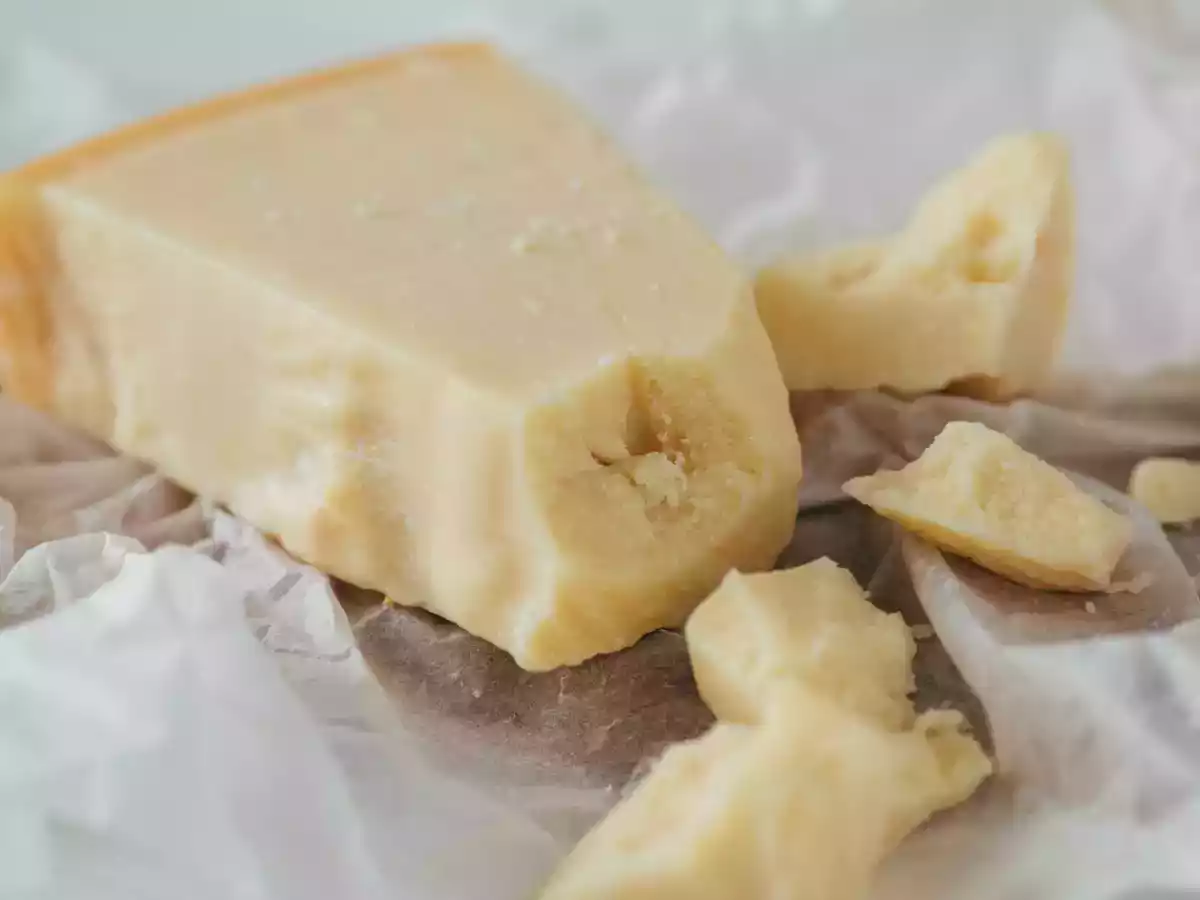Parmigiano Reggiano vs Grana Padano: who really comes out on top?

Italy, home of a cuisine that is a hymn to life, jealously guards gastronomic treasures that have made history. Among them, Parmigiano Reggiano and Grana Padano occupy a place of honor, as two undisputed kings of the cheese kingdom. Born of millennia-old traditions and a perfect alchemy of milk, time and dairy mastery, these cheeses encapsulate the soul of a territory and the experience of generations. Although at first glance they may seem like twins, a closer look reveals a world of nuances and peculiarities that make them unique and unmistakable.
1. Production area
- Parmigiano Reggiano is made only in a very specific area between Emilia-Romagna and Lombardy. We are talking about the provinces of Parma, Reggio Emilia, Modena, Bologna (only the part west of the Reno River) and Mantua (only south of the Po River). In these places, the climate and the land are special and make the milk have a flavor all its own, which is then found in Parmigiano, making it unique in the world.
- The production area of Grana Padano is significantly larger, extending over as many as 33 provinces in Lombardy, Veneto, Emilia-Romagna, Trentino-Alto Adige and Piedmont. This territorial variety results in greater organoleptic diversity than Parmigiano Reggiano.
2. Cow feeding
- To obtain the highest quality Parmigiano Reggiano, the rules are strict. The cows feed exclusively on fresh grass and hay, without the addition of silage. This choice guarantees an authentic and unmistakable flavor to the cheese, the result of natural production that respects tradition
- In Grana Padano, on the other hand, the use of silage is allowed. This difference is not a minor detail: silage makes the production of Grana Padano more flexible and sustainable for farmers, but at the same time it slightly modifies the final flavor and reduces the maturing time. It is a choice that reflects the more versatile nature of this cheese, which originated as a product of wider agricultural regions.
3. Seasoning
- The aging of Parmigiano Reggiano, which lasts at least 12 months (and can go up to 48 months), is crucial for the development of its flavor profile. With aging, there is a gradual evolution of the taste, which moves from initial fruity notes to more complex hints of dried fruit, bread crust and caramel. This long aging gives the cheese a strong and persistent character, typical of high-quality products.
- Grana Padano, after at least 9 months of aging and up to a maximum of 20, develops a softer, more enveloping flavor than its cousin Parmigiano. The buttery notes and sweet aftertaste make it a cheese with a more delicate and inviting character. It is like savoring a hilly landscape in springtime, compared to the majesty of a snow-capped mountain: two different beauties, but both fascinating.
4. Taste
- Parmigiano Reggiano is known for its complexity, with an umami taste that invades the taste buds, leaving a lingering, deep aftertaste. Its texture is crumbly, with a natural crystallization that crunches under the teeth. It is a cheese that tells its story through every nuance of flavor, ever more intense and rich.
- Grana Padano is softer and more delicate on the palate, with a slightly sweet and less salty taste. It is like a warm, enveloping hug, perfect for those seeking a less assertive flavor. Its elastic texture also makes it ideal for grating from a young age, without covering the taste of other ingredients. In short, Grana Padano is a wild card in the kitchen, always ready to lend a hand without stealing the show.
5. Price
- Parmigiano Reggiano, being a high quality cheese, has a higher price due to the complex production process and limited production area
- Due to wider production and less constrained to specific areas, Grana Padano is generally more available on the market and has a more contained price, but without compromising quality.
What to choose between parmesan cheese and Grana Padano?
Parmigiano Reggiano and Grana Padano represent Italian dairy excellence, with unique characteristics that make them ideal for different needs in the kitchen. If you are looking for an intense and complex flavor, perfect to enjoy in flakes or as the star of a dish, Parmigiano Reggiano is the right choice. It is ideal for rich risottos, flavorful pastas, and goes well with a full-bodied wine. Grana Padano, on the other hand, offers a more delicate and versatile taste, ideal for enriching salads, soups or dishes where the cheese should not overpower. It is perfect for lighter preparations, such as a fresh pasta, where it enriches the dish without dominating it.
You might also be interested in:
 Daniele Mainieri
Daniele Mainieri

Comments